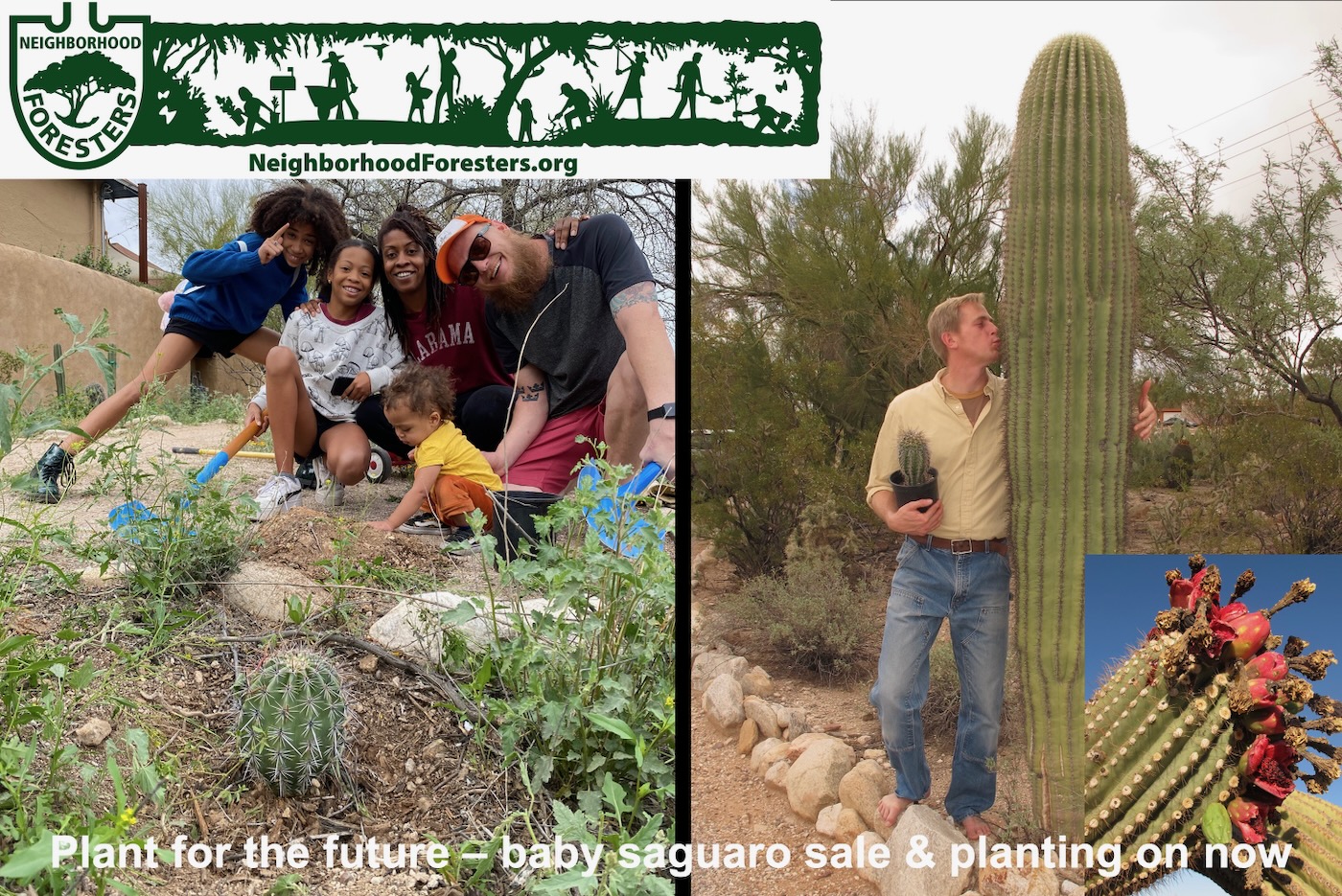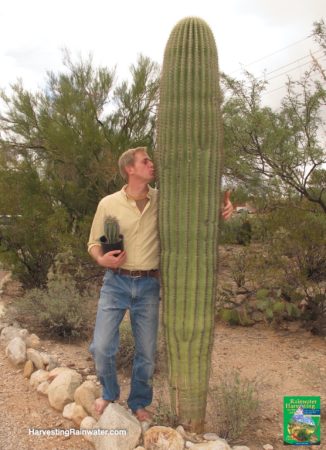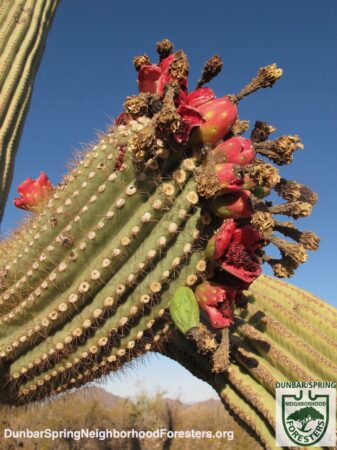

Baby saguaros grown from seed (NOT removed from the wild), ranging from 6 to 8 inches in height are available for $25 each (and we can help you place and plant them where they will thrive).
They have been growing out in the open (in their nursery pots), and can be planted in the ground out in the open, though they’d prefer a little shade from the hot afternoon sun. The ideal time to plant is after the fall equinox (September 21) as the sun is then lower in the sky as less likely to sunburn the young saguaros as they are getting established. They will be well acclimatized when the sun gets higher again after the spring equinox (March 21).
Here are some saguaro babies planted earlier and cared for by various neighbors


They’ll need to be watered twice a week the first month, and then once per week after that (especially during their first hot summer in the ground). After that they should be good to go on their own.
These young cacti may be small, but they grow faster than you think.
They can grow up to 6 inches per year if they get a little more moisture (I’ve witnessed this when they are planted next to, but not within, a rainwater-harvesting basin.
Baby saguaros we planted years ago in the neighborhood are now taller than us.

Let’s bring the saguaro forest back into our neighborhoods by planting now!
The saguaros have beautiful flowers that support many native pollinators, then delicious fruit for us, wildlife, and livestock. Plus, they make great nesting sites for many birds, including elf owls, that take up residence in nesting holes wood peckers create in the saguaro.
Let’s make hooting owls (that nest in the cavities or “boots” within the saguaros) a regular occurrence at night in our neighborhood!

Contact Brad at NeighborhoodForesters@gmail.com with your name, phone, email, address, and neighborhood if you are interested.
Only a limited supply available – first come, first get!
And you must commit to caring for the saguaro for years to come – its super easy, and they’ll do so much better with you looking out for them.
Brad will deliver the saguaro, help you find a good planting spot, and help you plant.
Priority will be given to those planting & caring for the baby saguaros in the public right-of-way (that way everyone can enjoy them); then front yards where the saguaros can be seen by passers by.
Priority will also be give to locations in the Dunbar/Spring Neighborhood (we are trying to encourage each neighborhood to organize its own sale and planting).
But if we have enough, second priority will be for the following neighboring neighborhoods of:
Barrio Anita, Barrio Blue Moon, and West University
Wanna help others with the planting?
Email Brad at NeighborhoodForesters@gmail.com.
Thanks to B & B cactus farm for growing these cactus!
Keep them in mind when you want to gift someone a baby saguaro to act and grow as living totem marking a big life event such as a birth, wedding, graduation, job, etc.
Check out our yard tree sale & planting too
For great info on planting the rain, greywater, stormwater, and more to water your plants for free
See HarvestingRainwater.com and the full-color editions of the books Rainwater Harvesting for Drylands and Beyond